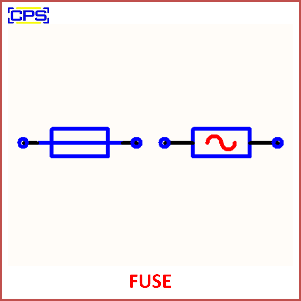A fuse is a safety device used in electrical circuits to protect them from excessive current. It consists of a thin wire or strip of metal that melts and breaks the circuit when the current exceeds a predetermined level, thereby preventing damage to electrical components and reducing the risk of fire.

Key Features of a Fuse:
- Construction:
- Made of a conductive material (e.g., tin, copper, or aluminum) with a low melting point.
- Enclosed in an insulating casing to ensure safety.
- Operation:
- When current exceeds the fuse’s rating, the heat generated melts the metal element, breaking the circuit and stopping the flow of electricity.
- Current Rating:
- Fuses are rated based on the maximum current they can handle without blowing.
- Single-Use:
- Once a fuse blows, it must be replaced to restore the circuit.
Types of Fuses:
- Cartridge Fuse: Cylindrical shape, used in appliances and industrial equipment.
- Blade Fuse: Used in automotive applications.
- Resettable Fuse (PTC): Automatically resets after cooling down.
- High-Rupturing Capacity (HRC) Fuse: Designed for high-voltage applications.
Applications:
- Household Electrical Systems: Protects wiring and appliances from overloads.
- Automobiles: Safeguards electrical circuits in vehicles.
- Industrial Equipment: Prevents damage to machinery during short circuits or power surges.
- Electronic Devices: Protects sensitive components from overcurrent.
A fuse is an essential component in electrical safety, providing a simple and effective way to prevent damage and hazards in electrical systems.
